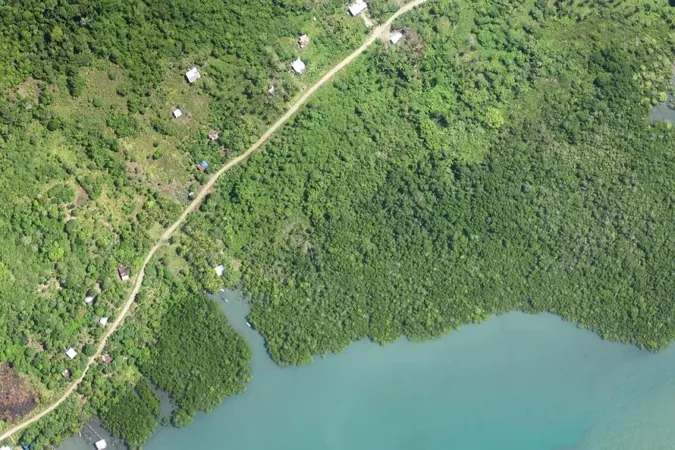
Surprising New Links Between Bird Flu and Migratory Birds Uncovered in Latest Study
2024-11-10
Author: John Tan
Introduction
SINGAPORE – A groundbreaking study has revealed that the transmission of bird flu, or avian influenza, may occur through migratory birds in a way previously underestimated. Traditionally, it has been believed that the H5 avian influenza virus is mainly contracted through close contact with infected poultry or contaminated environments. However, researchers suggest that habitat destruction, such as deforestation impacting coastal regions, could be bringing these migratory birds into closer contact with human communities, thereby facilitating potential disease spillover.
Study Findings
Published in Nature Communications on October 17, the study examined 2,000 blood samples from residents of northern Sabah in Malaysian Borneo. Remarkably, the findings indicated that both poultry owners and those without poultry ownership had developed antibodies to the H5 virus, indicating exposure to avian influenza. This discovery has raised alarms, as it challenges the long-held notion that exposure to poultry is the primary risk factor for humans.
Research Insights
The study, conducted by a team from the Pandemic Sciences Institute at the University of Oxford and other institutions, highlighted a concerning aspect: no confirmed human cases of H5 flu had been reported in the subject areas studied, yet the presence of H5 antibodies among locals suggested a different pathway of transmission through direct or indirect contact with migratory shorebirds.
Migration Considerations
The samples were taken from individuals living near habitats frequented by shorebirds like plovers, sandpipers, and others along the East Asian-Australasian Flyway, a critical migration route. This new insight emphasizes the urgent need for enhanced monitoring at these migration sites to better understand the risk of zoonotic diseases originating from wildlife.
Expert Opinions
Lead author Hannah Klim underscored the importance of these findings: “This study highlights a possible transmission route that has been understudied.” Moreover, one of the study’s co-authors, Associate Professor Kimberly Fornace, pointed out that urban expansion and changes in land use are forcing wildlife and human populations closer together, subsequently raising spillover infection risks. “We must focus on conservation efforts to protect wildlife habitats, which could simultaneously reduce disease transmission risks,” she stated.
Urgency for Action
With Borneo having lost approximately 50% of its forest cover between 1973 and 2015, and with habitats like mangrove forests being replaced by industrial agriculture, the urgency of the situation is palpable. As climate change and habitat disruptions continue, researchers are calling for further investigations to understand how the rise of zoonotic diseases may evolve in such a rapidly changing environment.
Reevaluation Needed
Notably, experts like Professor Dale Fisher from the National University of Singapore and Dr. Mary Rodgers from Abbott’s diagnostic business agree that this study signals a need for a reevaluation of how avian influenza might be affecting human health. Prof. Fisher commented, “We need to look at avian influenza spread in a new way,” while Dr. Rodgers warned that climate change could encourage the migration of virus-carrying wildlife closer to human habitation.
Conclusion
In conclusion, as urbanization marches on and habitats are lost, the interactions between humans and wildlife will likely become even more intricate. This study serves as a crucial starting point for enhanced surveillance and precautionary measures, propelling a more comprehensive understanding of disease transmission routes in our interconnected world.


 Brasil (PT)
Brasil (PT)
 Canada (EN)
Canada (EN)
 Chile (ES)
Chile (ES)
 España (ES)
España (ES)
 France (FR)
France (FR)
 Hong Kong (EN)
Hong Kong (EN)
 Italia (IT)
Italia (IT)
 日本 (JA)
日本 (JA)
 Magyarország (HU)
Magyarország (HU)
 Norge (NO)
Norge (NO)
 Polska (PL)
Polska (PL)
 Schweiz (DE)
Schweiz (DE)
 Singapore (EN)
Singapore (EN)
 Sverige (SV)
Sverige (SV)
 Suomi (FI)
Suomi (FI)
 Türkiye (TR)
Türkiye (TR)